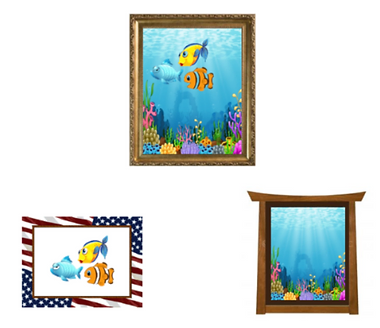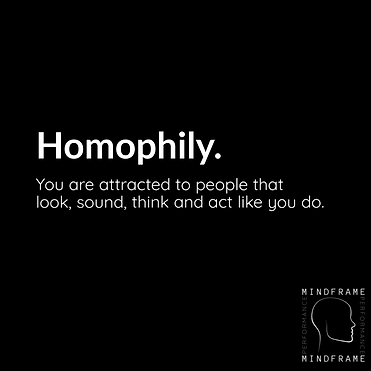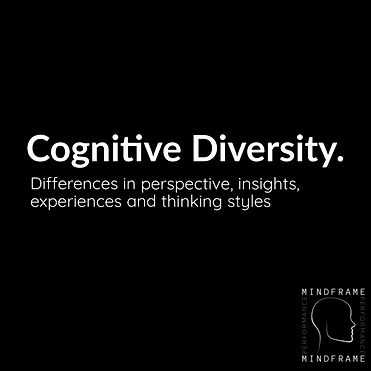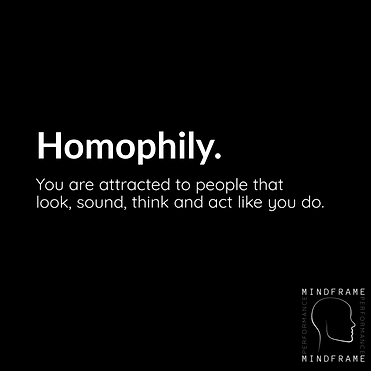Homophily, Cognitive Diversity & Creativity in Business
Take a look at your close friends, your colleagues and the people you surround yourself with. My guess is, for the most part, that they probably look, think or act like you do. This is the similarity-attraction effect, otherwise called homophily. Homophily is evident in our social, romantic and work relationships, and I would even guess it exists when choosing your pet, as owners tend look like their dogs. Socially it makes sense. Why wouldn’t you choose to hang around with people who share similar interests, views and hobbies to you? It creates social connections and familiarity. But it does have its drawbacks in business.
This razor advert perfectly highlights homophily in action.
This advert implies that because he shaves his head to match the interviewer and the portraits of the executives on the wall, he will get the job. The sad thing is, there is some truth in it.
There is a problem with homphilous hiring in the workplace, even if it the employer is not consciously aware of doing so (it is a subconscious bias). Research shows employers tend to hire people who look, think and sound like they do, which is probably why there is an issue with diversity in the workplace. Foreign sounding names (relative to the country hiring) are less likely to make it through to the interview stage and a government report in 2018 found a 12% difference in employment rates between white ethnic groups and all other ethnics groups in the UK.
Now having a diverse workforce isn’t just good for the public relations of a company, but it may also be beneficial for performance. Research shows that companies with a diverse set of employees have higher cash flow and companies with gender-diverse executive teams are 21% more profitable – a problem for our company in the razor advert with exclusively smooth headed, male board members.
But why is this? They’ve not pulled out brain cells attached to their hair follicles when shaving their heads (the razor isn’t that good), nor is it that that looking a certain way makes you think a certain way. But, let’s just suppose our bald compadres in this advert do in fact think similarly and there was some homphilous hiring going on, not just because of their similar receding hairlines but also due to their way of thinking and behaving.
On an individual level, they may be high performers and approach problems critically. The issue is that homophily limits diverse thinking and inhibits creativity in teams.
Homophily limits people’s social worlds and shapes attitudes based on the information received and interactions had. Surrounding ourselves with people who think and behave like us confirms our beliefs, assumptions and perspectives, creating an echo chamber that is reinforced by significant others, leading to
Perspective blindness – You are blind to other perspectives
Perspective blindness is perfectly highlighted in an experiment showing how culture affects perception. Social psychologists showed American and Japanese participants the same underwater scene and although both groups saw the same image, they reported very different things. America is an individualist society which places an emphasis on objects, and the Americans talked about the fish in the images. Japan however, is an interdependent society placing emphasis on context, displayed through them reporting the background scenario in which the fish were swimming. When the fish were placed in a different context, the Japanese struggled to recognise the fish yet the Americans were oblivious to the contextual change. The study highlights how upbringing dictates your perception. While no group was wrong in their responses, they were blind to other perspectives beyond their frame of reference.
Homophily translates to poorer team performance as it limits the collective intelligence due to analogous thinking styles. High performing teams have:
Cognitive diversity – “differences in perspective, insights, experiences and thinking styles” – Matthew Syed, Rebel Ideas.
It allows unique, unparalleled perspectives that frame situations and problems differently, igniting creativity and innovation. Diversity beyond demographics. The effects of cognitive diversity and homophily on collective intelligence are best represented visually. The rectangle represents the problem space and the circles represent an individual’s intelligence and perspective for viewing a problem.
Taken from Rebel Ideas – Matthew Syed
As you can see, homophily leads to knowledge assimilation, an overlapping of insights that view the problem from a similar, limited perspective. Individual intelligence is often hailed above all else, but it is also limited. However intelligent one person may be, multiple individuals who assess and approach a situation in cognitively diverse ways far exceed individual capabilities. A cognitively diverse team may not necessarily be made up of superior individuals, but their diversity in thinking allows fresh ideas and perspectives for attacking a problem collectively. It is important to note that diversity alone doesn’t lead to a high performing team. Diversity without expertise is ineffective.
Intelligent individuals with knowledge of the specific area are crucial for a high performing team, but if that knowledge is combined with diverse perspectives across a team, it increases the potential for creativity and performance.
For techniques on how to avoid subconscious biases that suppress your team’s creativity, and for methods to enhance cognitive diversity within your team, get in touch!




![]()








